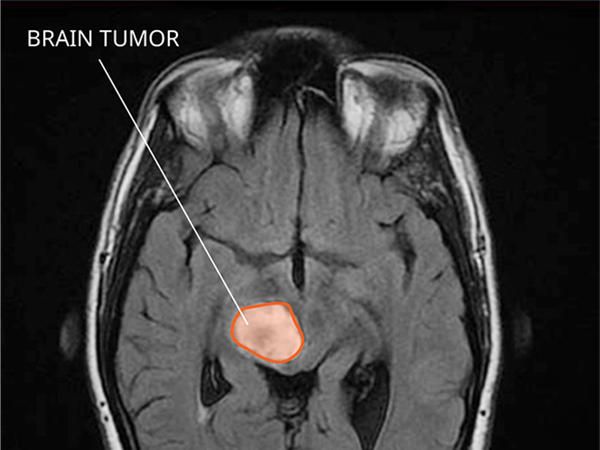Glioma brain tumor surgery in Iran
What is a glioma brain tumor?
Glioma or glioma is a tumor that develops in the brain and spinal cord.
Glioma tumors form in glial cells that surround nerve cells and help them function properly.
Three types of glial cells can cause glioma tumors. Gliomas are classified according to the type of glial cell involved in the tumor and the genetic characteristics of the tumor.
Glioma tumor classification helps the brain tumor surgeon to predict its behavior over time and plan appropriate treatment.
Types of glioma brain tumors
- Astrocytoma includes astrocytoma, anaplastic astrocytoma, and glioblastoma
- Ependymomas include anaplastic ependymomas, myxopapillary ependymomas, and subepandemas
- Oligodendrogliomas – including oligodendroglioma, analgesic oligodendroglioma, and anaplastic oligostrocytoma
Glioma tumors can affect brain function and can be fatal depending on the location and rate of growth.
Glioma is one of the most common types of primary brain tumors. Determining the type of glioma will help the neurosurgeon begin better treatment tailored to your condition.
In general, glioma treatment methods include:
Surgery, radiation therapy, chemotherapy, targeted therapy and experimental clinical trials.

What are the signs and symptoms of glioma brain tumor?
The symptoms of a glioma tumor can vary greatly depending on the type, size, location, and rate of growth.
The most common symptoms are:
- Headache
- Nausea or vomiting
- Confusion or decreased brain function
- Memory weakness
- Personality changes or irritability
- Difficulty maintaining balance
- urinary incontinence
- Vision problems such as blurred vision, diplopia or reduced peripheral vision
- Speech problems
- Seizures, especially in someone who has no history of seizures
Treatment methods for glioma brain tumor
Glioma treatment depends on its type, size, degree and location, as well as your age and health status.
In addition to the work that is done to remove the tumor itself, treatments are also done to reduce the symptoms caused by the tumor.
You may be prescribed steroids to reduce swelling and relieve pressure in the affected areas.
Anticonvulsant drugs are prescribed to control seizures caused by the tumor.
The surgery tries to remove as much of the tumor as possible.
Surgery is usually the first step in treating most types of glioma tumors.
In some cases, the glioma is small and easily removed from the surrounding healthy tissue, so the tumor is completely removed during surgery.
In other cases where the tumor cannot be completely removed from the surrounding healthy tissue, or if the tumor is close to a sensitive area in the brain and makes surgery risky,
The best neurosurgeon in Iran removes the tumor as little as it is less dangerous and leaves the rest to be destroyed with other treatments.
Note that even if only part of the tumor is removed, it is still very effective in relieving symptoms.
In some cases, the neurosurgeon can take a sample during the surgery and send it to the pathologist so that the result can be determined there and the surgeon can use this information to make a better decision about removing the tumor.
There are a variety of surgical technologies and techniques to help keep brain tissue healthy as much as possible so that other tissues are not damaged during tumor removal.
These include computer-assisted surgery, MRI guidance, wake-up surgery, and lasers.
For example, in brain tumor surgery when awake, you are asked to do a specific task so that the doctor realizes that the relevant area of the brain that controls this function is not damaged.
Risks and complications of surgical resection of glioma brain tumor
Glioma brain tumor surgery in Iran also carries risks, including:
- Infection
- Bleeding
- Complications associated with the location of the tumor
Radiation therapy for the treatment of glioma brain tumor
Radiation therapy is usually done after brain surgery, especially in advanced cases of glioma. In radiation therapy or radiotherapy, high-energy rays such as X-rays or proteins are used to kill cancer cells.
For glioma brain tumors, radiation is emitted from a device outside the body called external beam radiation therapy.
For glioma brain tumors, radiation is emitted from a device outside the body called external beam radiation therapy.
Chemotherapy for the treatment of glioma brain tumor
In chemotherapy, medicine is used to kill cancer.
Chemotherapy is given as a pill or as an injection into a vein.
Chemotherapy is usually used to treat glioma with radiation therapy.
The chemotherapy drug used for glioma tumors is most often temozolomide, which is given in pill form.
Glioma brain tumor surgery in Iran
Dr. Mehdi Zeinalizadeh – professor in brain surgery and cranial base
Glioma brain tumor surgery in Iran

